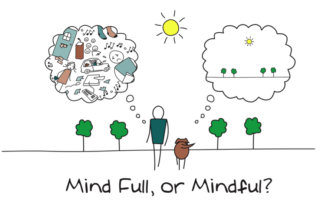To start off the New Year, I thought writing about finding self-compassion for oneself could be quite beneficial. When creating resolutions we often think about health and perhaps setting a goal for going to the gym more or eating better. I think in addition to this, learning to find self- compassion could create a huge positive impact on your life and well-being.
I am sure, just like me, there are times when you can be quite hard on yourself and judgmental. I have often discussed with clients that it is not uncommon for us to speak negatively internally to ourselves and that we find our brain saying things that we would probably never even say to a perfect stranger or even someone we dislike.
So much inner turmoil can stem from criticizing ourselves. As humans, we all go through difficult times and we can be easily hooked by re-hashing these events by questioning what we could have done or should have done or what we did wrong.
Finding self-compassion is about feeling loved, accepted and appreciated. Learning that deep down we are okay and recognizing that no matter what is happening in our lives we deserve love, happiness and appreciation. Through finding and building self-compassion we can also be working on creating a tool for ourselves to utilize when we are suffering or experiencing distress, and it can be that supportive voice that helps us find beauty and meaning.
A simple way to look at self-compassion is the opposite of being self-critical. Practicing noticing this difference when life is going well, and when it is hard, is very important. Self-compassion takes time to build, but awareness and practice of using a self-compassionate attitude can give you an internal source of emotional regulation and resilience. It can help you to be more connected with the present and the beauty of life.

The following is a simple mindfulness practice you can start today to begin working on cultivating self-compassion:
Arrange yourself in a comfortable position, eyes opened or closed. You might place your hands on your heart or lap.
You are going to start by thinking about different objects – it can be a person, animal or anything else – until you find one that brings up natural and uncomplicated feelings of warmth and love.
Now continue to concentrate on this object you feel love towards. Let the image of it, in your mind, become clearer. Do you notice any relaxation, tension, or lightness? Just note that.
Now try saying the following phrases to the object you are picturing. Feel free to change the phrases:
- May you be happy
- May you be healthy
- May you be safe
- May you be loved
Repeat these phrases a few times and allow the positive feelings in your body to be as strong as they want to be (continue for about 5 minutes).
Now picture that person saying the following phrases to you:
- May you be happy
- May you be healthy
- May you be safe
- May you be loved
Picture the person saying these phrases a few times and allow the positive feelings in your body be as strong as they want to be (continue this for about 5 minutes).
![]()
Sourced from The Self-Compassion Skills Workbook by Tim Desmond









